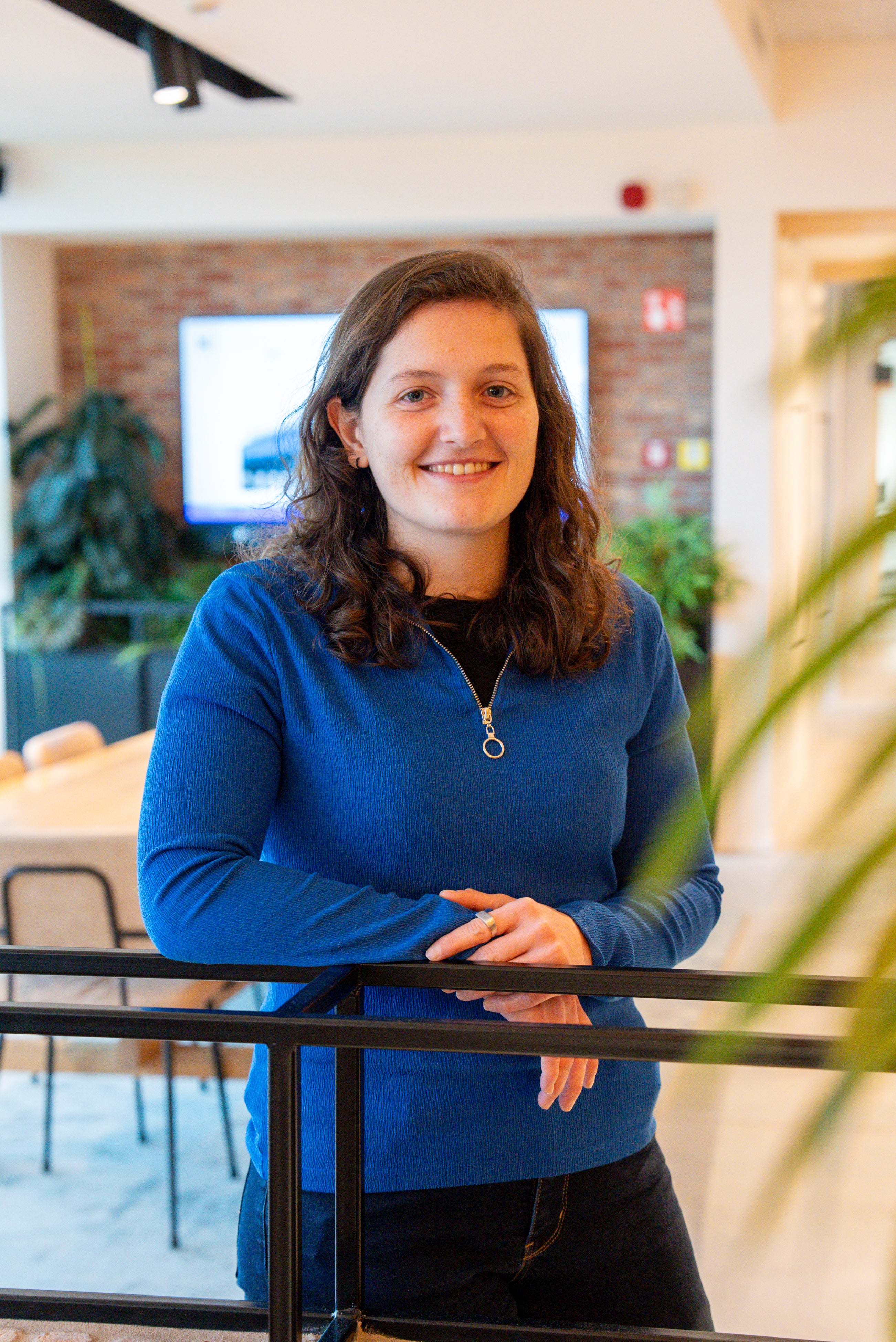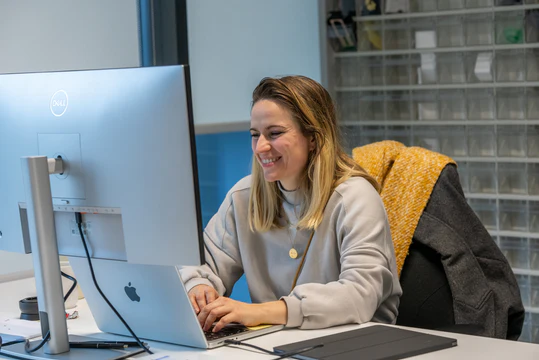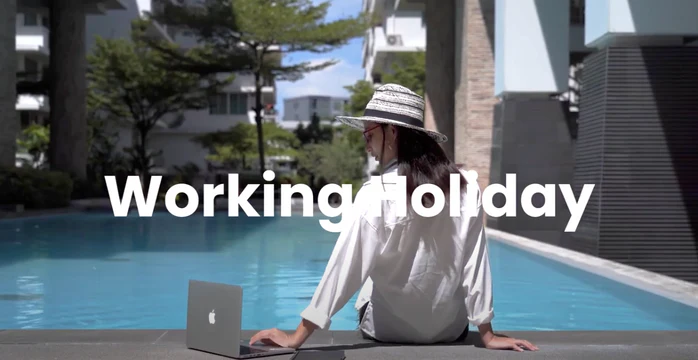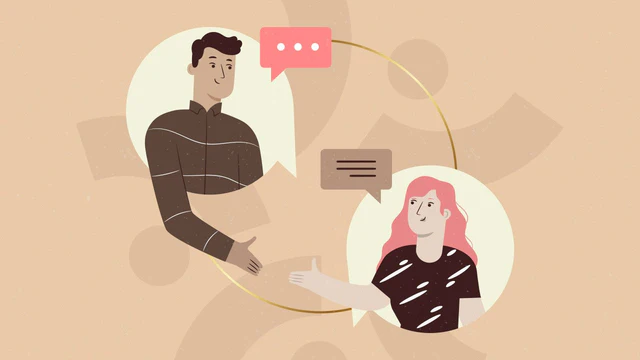To say we’re a fast-paced company would be an understatement. We want to deliver the best earwear to our customers and we want to do it now. The secret ingredient to meet our crazy goals while keeping our energy up? Collaboration. Our Product Development Engineering Lead Alyssa shares how she thrives together with her team, even when deadlines and requirements are demanding.

Connecting the dots for in-house product development
As a product development engineering lead, I make sure different disciplines – like user design and acoustics – work together to create products that resonate with our users’ needs.
Essentially, my job is to translate research from our consumer insight specialists and product managers – who dive deep into customer behavior – into tangible engineering specs. And then of course bring acoustics, usability and design together into a final product. From idea to mass production. Every part should align perfectly with what's expected in the final product, ensuring that all technical requirements are met.
I also bridge the gap between the industrial designs and practical requirements. For instance, if there’s a need to enhance sound attenuation, which might require adding bulk to an ear tip, I connect with the designers to balance user comfort with technical requirements.
The fact that we handle the whole product development cycle in-house is a game-changer. It allows us to be intimately involved at every stage of development, including user testing, which is often managed externally in other companies. It’s all about working together to deliver a product that looks great, performs excellently and is comfortable for the user.
Open communications, support and humor keep us going
Collaboration is the heartbeat of our product development team. Every day, I work closely with an array of specialists, from design and user-centric teams to acoustic and mechanical engineers.
Our communication channels are always open – whether we're in the office brainstorming, discussing modifications during online calls, or building and testing prototypes. Our teams are mostly in our Amsterdam and Antwerp hubs, and we keep our project alignment and team spirit vibrant by holding daily and weekly syncs, and by monthly visits between our hubs. These regular interactions allow us to share challenges and solutions regularly and keeps the pace high.
We don’t work in silos, but we do have more and more specialists joining us. Getting all those fresh perspectives and expert knowledge together ensures we look at our challenges from every angle. It's exhilarating to be part of a team that’s not just talking about innovation but actually living it daily.
We're a well-oiled machine, using each other’s strengths and trusting in our combined capabilities to meet tight deadlines. This trust ensures that tasks are picked up and completed without any micromanagement. But don’t be fooled: we’re very much human and the pressure can get to us sometimes. We’re all passionate and the project roadmap is intense. Thankfully, we’re able to lift each other up when needed. We motivate each other to take breaks, head home early, and enjoy some downtime in quieter periods, so we can smash deadlines when necessary.
It's a supportive environment, and we can remind each other that it's okay to take a break. This approach, combined with the high standards and expertise of everyone who works here, ensures that our quality is consistently high. Also, humor is our secret ingredient to make sure we don’t take everything too seriously.
We’re in these fast-paced challenges together
The hypergrowth and constant evolution present their own set of advantages and challenges, especially as roles and responsibilities shift to accommodate expanding teams. When I first joined, the lines between different functions were much blurrier; we all pitched in wherever needed because the team was smaller and less specialized.
Now, specialist roles like quality engineering, operations, and mechanical engineering have been added to the team, which is fantastic for professional growth and organizational structure. But having all these disciplines in a project can also be quite overwhelming. Adapting to project changes while trying to meet the high standards we set for ourselves sometimes triggers imposter syndrome. Fortunately, the open communication shows us that we all experience similar feelings and challenges at times. It helps a lot. It's this level of understanding and support from teammates and our managers that really helps us navigate those tough moments and continue to perform at our best.
Obviously, the company itself also plays a big role in achieving the best outcomes. Not only by hiring that specialized talent, but also by giving us the trust and resources to run our projects smoothly. For instance, I’m going to China for two weeks to speed up the process. If that’s what it takes, go for it.
Additionally, we have budgets and dedicated days for learning, and a comprehensive 360-review process that includes feedback from peers and self-reflection every six months. This frequent evaluation is essential, especially given the rapid changes in our projects and teams.
Ready to run at a fast pace, work on full product development cycles in-house and bring your good sense of humor? Check out our open product vacancies.

Why designing earwear is far from boring
Senior Industrial Designer Elodie Delassus tells us all about her everyday challenges, why she’s excited to work on a...

The reality of a workaway
Traveling is a big part of who we are at Loop. But we also need to work. And then it hit us, why not combine the two?

Tips for giving tips: How we build a constructive feedback culture
When it comes to actually giving that feedback to others, we tend to get a bit nervous. We love giving kudos, high f...














